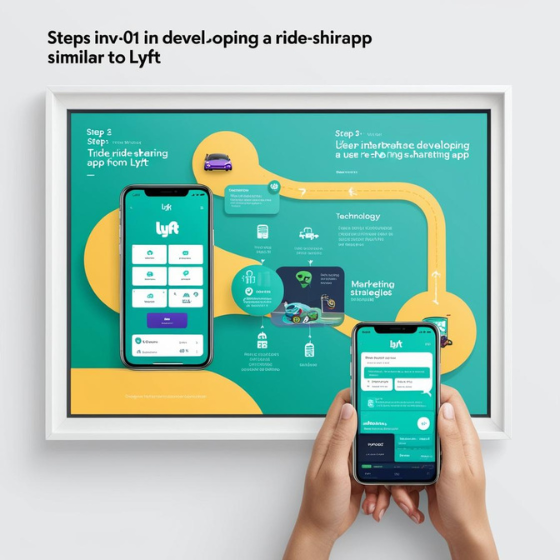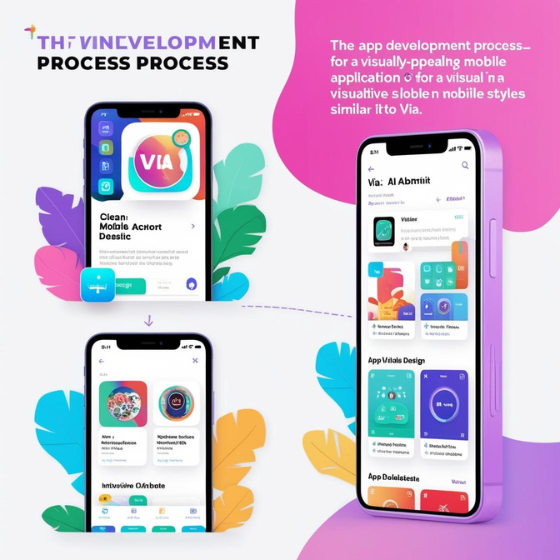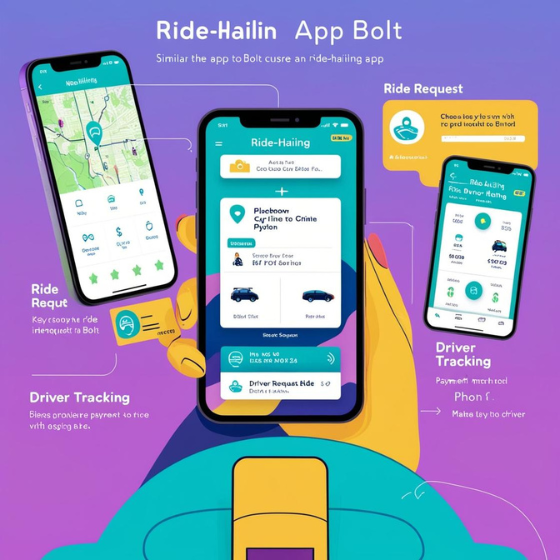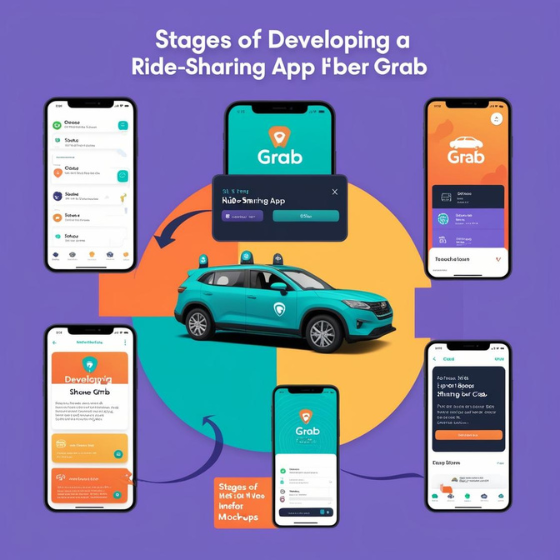How to Make an App Like Lyft: A Comprehensive Guide for Entrepreneurs
The ridesharing market is booming, and apps like Lyft have revolutionized transportation by making it convenient, efficient, and accessible. But how to make an app like Lyft that stands out in a competitive market? In this blog, we’ll explore the essential steps, features, and strategies required to develop a successful ridesharing app. Whether you’re an entrepreneur or a tech enthusiast, this guide will provide valuable insights to help you turn your vision into reality.
Understanding the Ridesharing App Ecosystem
Ridesharing apps operate as a bridge between drivers and passengers, leveraging real-time data to deliver seamless service. To make an app like Lyft, it’s critical to understand its business model, target audience, and key features. Lyft has achieved success through its user-friendly interface, reliable service, and innovative features.
Key Features to Include in a Ridesharing App
To develop an app like Lyft, you must prioritize the features that enhance user experience and operational efficiency.
- Passenger Features
- User Registration and Profiles: Allow users to sign up and create profiles effortlessly.
- Real-Time Tracking: Provide live updates on ride locations.
- Payment Integration: Support multiple payment options, including cards and wallets.
- Ride Scheduling: Offer advance ride booking for convenience.
- Ratings and Reviews: Let passengers rate their experience and provide feedback.
- Driver Features
- Driver Registration: Simplify onboarding with document uploads and approvals.
- Trip Management: Help drivers manage ride requests and routes efficiently.
- Earnings Dashboard: Enable drivers to track their earnings in real time.
- Driver Support: Provide easy access to customer service for assistance.
- Admin Panel Features
- User and Driver Management: Monitor and manage profiles seamlessly.
- Ride Analytics: Track app performance and optimize operations.
- Dynamic Pricing: Adjust pricing based on demand and traffic conditions.
- Promotions Management: Create and oversee discounts or promotional offers.
Technical Steps to Develop an App Like Lyft
- Conduct Market Research
Start by analyzing the competition and understanding your target audience’s preferences. Market research will inform your app’s unique selling points and core features. - Choose the Right Technology Stack
A robust technology stack ensures the scalability and reliability of your app. Lyft uses frameworks like Node.js for the backend, Swift for iOS, and Kotlin for Android. Similarly, choose technologies suited to your app’s functionality. - Design the User Interface (UI)
Your app’s success hinges on an intuitive and visually appealing UI. Prioritize ease of navigation and a clean layout. Use prototypes to refine your design based on user feedback. - Develop Core Features
Focus on integrating essential features first, such as geolocation, ride-matching algorithms, and payment gateways. Test each feature rigorously to ensure seamless functionality. - Incorporate Advanced Features
Elevate your app by adding features like ride-sharing options, safety alerts, or eco-friendly ride modes. These can set your app apart from competitors. - Testing and Quality Assurance
Before launching, perform thorough testing to identify and resolve bugs or glitches. Test your app across devices and platforms to ensure consistent performance. - Launch and Marketing
Roll out a beta version to gather user feedback. Invest in marketing strategies to build awareness and attract initial users. Highlight your app’s unique features in promotions.
Cost and Timeline for Building an App Like Lyft
Building a ridesharing app requires careful budgeting. Costs depend on factors such as app complexity, development team location, and timeline. A basic version of the app may take 3–6 months and cost between $50,000 and $150,000, while a fully-featured app may take 9–12 months and cost upwards of $250,000.
Challenges in Developing a Ridesharing App
Creating an app like Lyft involves overcoming several challenges:
- Data Security: Ensure robust encryption and compliance with data protection regulations.
- Scalability: Build a scalable app architecture to accommodate future growth.
- Regulatory Compliance: Understand and adhere to local laws governing ridesharing services.
At Sodio, we specialize in building secure, scalable, and regulation-compliant apps tailored to your business needs. Explore our custom app development solutions to learn more.
Case Study: Success Story of Lyft
Lyft’s journey offers valuable lessons for aspiring entrepreneurs. Founded in 2012, Lyft prioritized a community-driven approach and emphasized sustainability with features like shared rides and electric vehicles. Its user-friendly interface and transparent pricing have been key to its success. Learning from Lyft’s strategy can help you make informed decisions when creating your app.
Monetization Strategies for Ridesharing Apps
To make an app like Lyft financially viable, consider these monetization strategies:
- Ride Commissions: Charge a percentage of each ride fare.
- Subscription Plans: Offer premium plans with benefits like priority bookings.
- Advertisements: Partner with local businesses to display targeted ads.
- Cancellation Fees: Implement fees for last-minute ride cancellations.
Integrating Advanced Technologies
Stay ahead of the curve by integrating cutting-edge technologies into your app.
- AI and Machine Learning: Use predictive algorithms to optimize routes and pricing.
- Blockchain: Enhance payment security and ensure data transparency.
- IoT: Connect with smart devices for features like automated ride scheduling.
At Sodio, we leverage advanced technologies to develop future-ready applications.
Why Choose Sodio for Your App Development Needs?
Partnering with an experienced app development company can make a significant difference in the success of your project. At Sodio, we provide:
- End-to-End Support: From ideation to launch and beyond.
- Tailored Solutions: Apps designed to meet your unique business requirements.
- Expert Team: Skilled developers proficient in the latest technologies.
Explore our portfolio to see how we’ve helped businesses like yours succeed.
Conclusion
Building a ridesharing app like Lyft requires meticulous planning, the right technology stack, and a user-centric approach. By focusing on key features, understanding market dynamics, and leveraging advanced technologies, you can create an app that stands out.
Ready to take the first step? Contact Sodio today to discuss your app development needs. Let’s turn your vision into a reality and drive your business forward. Visit our contact page to get started.







